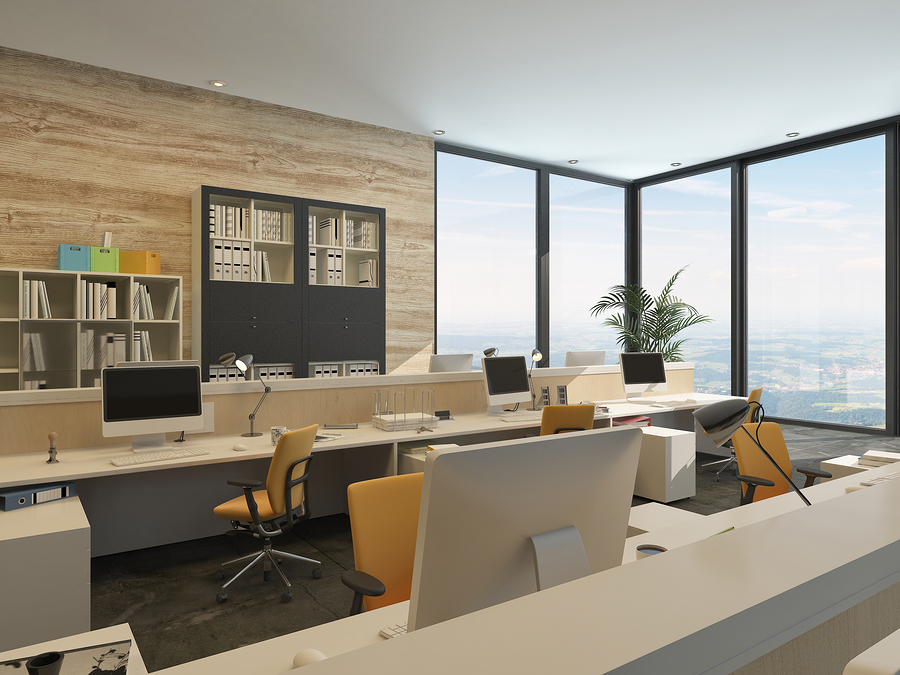Instant’s latest UK review has landed, and what’s the first notable change? A new name. Last year’s report was entitled ‘Serviced Office Review’ and this year it’s been upgraded to ‘Flexible Workspace Review’.
It’s a switch that OT heartily agrees with, as we discussed at length during the GCUC.All Conference (a workspace conference that brought the worlds of coworking and serviced offices together for the first time). We are all bound by a common trend of workspace flexibility, and today’s market is packed with innovative hybrid workspaces offering a rich blend of services.
But of course that’s not the only thing we noticed.
Instant’s UK Review is an inspiring story of a growing and increasingly diversifying UK market. Let’s start with the main UK highlights:
- The total number of UK business centres offering flexible workspace grew by 11 per cent across the UK in 2015/16 and now totals 3,290 centres (including co-working spaces).
- Enquiries for flexible space were up 21 per cent for the UK in total.
- London experienced the biggest increase of space at 16% but double-digit growth is also evident across the regions.
- The supply of flexible workspace in London has outstripped conventional office space by some margin in the last year (when compared with Estates Gazette research), and this trend seems set to continue into the future.
Surprisingly (or perhaps not, given concerns of London’s over-heated market and intense competition from new entrants), the London spotlight has dimmed slightly in favour of other cities and regions such as the South West.
Instant summarised: “There was double digit growth in occupier enquiries for flexible workspace in 2015/16. The only area of the UK not to experience an increase in enquiries of more than 10 per cent was the capital itself.”
Despite that, London still experienced an increase of nine per cent. Interestingly, Instant’s research shows a ‘doughnut’ of demand forming around the capital, with outer fringe areas like Kingston, Croydon and Ealing enjoying “aggressive” growth in enquiries and an uplift in workstation rates. This, Instant suggests, is largely driven by occupiers choosing “cheaper locations with good transport links over the highly competitive market in Central London.”
Coworking growth muted as ‘hybrid’ models progress faster
Instant found that the number of specific coworking sites in the UK has grown by 14.3 per cent compared to last year. Although encouraging, this figure can be considered fairly low compared with conventional serviced offices offering coworking; such hybrid spaces have increase by almost one quarter (22.9 per cent) in the last year.
Similarly, Instant expects the number of corporate coworking occupiers to increase. This same topic was raised during the recent Social Workplace Conference and formed the focal point of JLL’s 2016 report, ‘A New Era of Coworking’.
Furthermore, Instant noted that many operators have “evolved” to meet this demand for flexible collaborative space. The report highlights LEO’s 6-star brand, Quantum, which allows corporate clients to customise their space design and layout.
Likewise, The Office Group – one of the original serviced office suppliers to fully embrace coworking – has acquired more than 400,000 sq ft of space in the past year. Instant notes that these new spaces continue to develop the Group’s agile approach, offering a community-focused culture and an eclectic mix of value-added services ranging from on-site Pilates studios to organic cafes.
Global trends
The report also touched on the global flexible workspace market, drawing on the following key findings:
- In the past decade, the global market has averaged 13 per cent growth and has tripled in size overall.
- EMEA and APAC have enjoyed “rapid expansion” with growth rates of around 20 per cent, outstripping more mature markets such as the U.S., where expansion averages at 10 per cent.
- Instant cites 4.3 per cent growth in U.S. supply, counting 3,562 centres (including coworking-only spaces).
- In terms of serviced offices specifically, the UK’s 2,939 is 32 per cent of the global total, while the U.S. market has 27 per cent, EMEA has a 22 per cent share, APAC 15 per cent and Latin America 4 per cent.
- APAC is making its presence known with “strong signs of growth” including an increase of 50 per cent in the Hong Kong market in just two years.
- London and New York are the costliest locations for flexible workspace, averaging £740 in New York and £745 in London (Hong Kong averages £480).
Further growth expected on a global scale
Instant’s report concludes that, with rapid growth comes accelerating workstation rates in many key cites around the world. Yet “consumer demand continues to soak up increased desk rates and strong competition remains for the best sites” – suggesting that the industry can expect to see continued growth as part of its evolution.
This is at least partly driven by corporate demand for collaborative workspace, and this trend looks set to gather momentum in the near future:
“The key trend for the UK – and globally – will be the ongoing corporate uptake of flexible workspace… [this will be] driven by the increase in project work and the expansion in contingent workers. Corporate occupiers are now taking a long look at their space utilisation and are becoming increasingly aware of the option of using flexible office solutions in their portfolios.”
Read more in Instant’s full report.


 Dr. Gleb Tsipursky – The Office Whisperer
Dr. Gleb Tsipursky – The Office Whisperer Nirit Cohen – WorkFutures
Nirit Cohen – WorkFutures Angela Howard – Culture Expert
Angela Howard – Culture Expert Drew Jones – Design & Innovation
Drew Jones – Design & Innovation Jonathan Price – CRE & Flex Expert
Jonathan Price – CRE & Flex Expert












